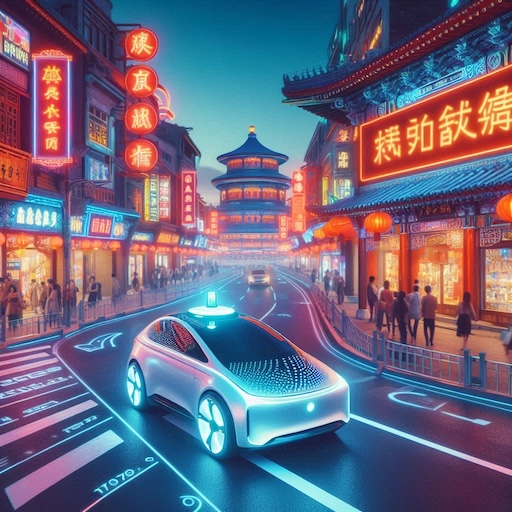Now that claims and counter claims about advances in foundational AI seem to be dying down, it becomes more interesting to look at the next wave – AI applications in key markets. Figuring out what is really happening here presents its own problems. Marketing and analyst literature still projects unbounded promise (now dialed back a bit), though some surveys suggest that enterprise adoption for business applications is still aspirational rather than mainstream. I now choose to look only at reasonably independent application surveys (here automotive), for example as reported in journals of peer reviewed literature.

Why a China focus?
The Chinese auto industry is the largest in the world by a wide margin as measured by unit production, which by itself is a pretty interesting statistic. That fact might be significant only within China if it weren’t for the fact their auto sales are also starting to grow in southeast Asia. While currently accounting for less that 10% of unit sales, Chinese OEMs are investing in factories across that region, expanding also in Brazil and now talking about Mexico. Separately, Volvo, now owned by a Chinese holding group, are promoting their EX30 and Polestar cars in Europe and the US. Whether or not these cars will clear US regulatory hurdles, it looks like Chinese automakers see opportunity to expand outside Asia.
The more important indicator for my purpose is that Chinese research in ADAS and autonomy is accelerating rapidly, no doubt motivated by tariffs/embargos. This is particularly obvious in automotive AI as judged by this paper from the China Automotive Technology and Research Center in Tianjin. Which in my view makes this area very interesting to watch.
Active production and R&D
Augmented reality (AR) heads-up displays (HUD) are one application space that seems to be tracking closely with Western R&D. There are several players here. Full-featured solutions depend on collaboration between the driver monitoring system (DMS)/pupil tracking, forward looking cameras, landscape perception (segmenting road regions, identifying nearby cars, pedestrians) and AR image rendering.
Subsets of this space are driver monitoring systems and occupant monitoring systems (OMS). Here DMS checks for closed or closing eyes or abnormal pose (is the driver slumped over or to one side?) to detect fatigue. OMS checks that you didn’t leave a child, an elderly person or a pet in the car. Here also there are multiple active deployments. Research here is looking at ensemble (multiple coupled) learning systems.
ADAS is already routine in China and BYD is actively testing L3 ADAS in Shenzen. This program started quite recently, so presumably will take time to build an adequate training database. Then again, the Chinese seem somewhat resigned to external monitoring so may be more open to external methods to assist car-based AI. Research here also is working with coupled systems including reinforcement learning, to predict vehicle trajectory and for lane keeping.
Fingerprint and facial recognition are already available to unlock and start some models, despite the occasional PR disaster. Research continues for handling challenging illumination conditions which can reduce accuracy for face-based recognition. Here again research is considering ensemble-based systems, presumably to recognize more complex facial characteristics than can be captured in a single training set. also factoring in physiological sensing for the driver. This is an intriguing video review of the new Xpeng G3 model, mentioning among other things facial recognition and physiological monitoring.
In cockpit control, hand gesture recognition as an alternate method of control is already available in some Chinese cars. Tencent has announced a mobility solution (I think voice-based) built on LLMs. While there has been an explosion in options in this space, I would imagine that will settle fairly quickly to a few survivors such as TenCent.
To round out in-cabin automation, 360o view monitoring and blind spot detection are now commonplace and advancing, for example looking for parking line markers and low obstacles (child, dog, kids bike).
Recognized challenges
The paper lists several challenges in execution and in adoption. Some of these are routine, others are interesting either for a different insight or for China-unique perspectives. There is recognition that on-board AI may not be sufficient for complex tasks and will need external (cloud) support. Which raises concerns about privacy and security. Chinese car buyers worry about this too according to the paper.
The authors also call out general low enthusiasm for AI-based features among Chinese drivers. They attribute this partly to learning curve but also partly to unpredictable quality in these systems. I think the argument here is that AI may be a great sales tool in the showroom but may see low usage in practice.
One problem they call out is weak linkage between hardware and software development teams, where they say in China collaborative hardware/software development still lags other countries.
Finally, the Chinese are wrestling with policy and regulatory concerns, just as we are. Even in that country there are no easy ways to bound factors like liability, privacy and security.
Takeaways
It seems clear in current deployment alone that Chinese auto makers are keeping up with other automakers, in the West and elsewhere in Asia. Meanwhile research also seems to be tracking research outside China. Whether we will see any of these cars in the US is now more a political question than a technical question, especially given the very low price tags on offer. I’m sure there will be quality problems, though our own automakers are hardly blameless in that department.
Worth continuing to watch.
Share this post via:







Quantum Computing Technologies and Challenges